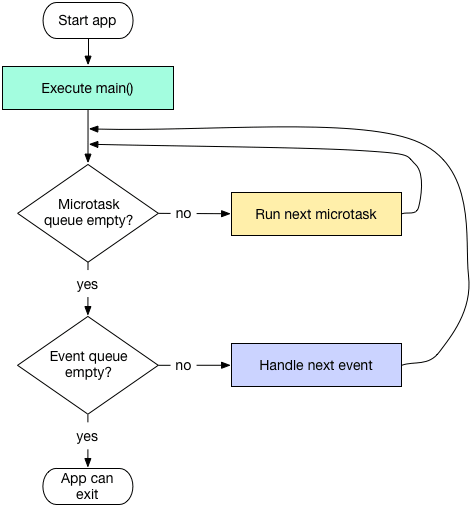Introduction
RESTful APIs are indispensable in modern web development because they allow for seamless communication between various software systems via the web. In this guide, I will discuss best practices for developing RESTful APIs, ranging from using nouns for resource names to tools for creating comprehensive documentation.
What are REST & RESTful APIs?
REST, or REpresentational State Transfer, is an architectural style that provides unified standards for web-based computer systems to communicate seamlessly. It employs a stateless client-server communication protocol—in almost all cases, the HTTP protocol.
The client-server model divides the workload between servers, which provide a resource or service, and clients, who request that resource or service. The statelessness principle ensures that every interaction between the client and the server is self-contained, carrying all of the necessary information for processing without relying on server-side context that has been stored.
Clients in the REST architecture communicate with the server by sending requests to retrieve or modify resources, which can be any piece of information that can be named and represented as a URL (texts, video clips, images, etc.).
REST-compliant web services, also known as RESTful systems, use HTTP requests to post resources (create and/or update), read resources (e.g., perform queries), and delete resources, thereby encompassing the entire CRUD (Create, Read, Update, Delete) operation. In turn, servers respond to these requests using XML or JSON format.
A typical HTTP request contains the following:
An HTTP verb that specifies what type of operation to perform.
A header that allows the client to send information about the request.
A path to an endpoint, a specific URL (a type of URI) that leads to a location on a server where you can find resources.
An optional message body with data.
In a REST system, we interact with resources using HTTP verbs, with the following four being the most commonly used:
GET: Retrieve a specific resource by id or a collection of resources.
POST: create a new resource.
PUT: update a specific resource by id.
DELETE removes a specific resource by id.
Best Practices for Building REST APIs
To ensure that a REST API fully serves its purpose – facilitating seamless communication between different software systems and improving the scalability and maintainability of web services – the following simple techniques can be applied.
Use Nouns for Resource Names
When creating names for your API endpoints, choose nouns that reflect the entities you’re interacting with. For instance, for operations related to user data, your endpoint should be named /users. It is better to avoid action-based names like /getUser or /createUser because the action should be deduced from an HTTP verb. This naming convention aligns with the REST principle of focusing on resources.
Be Consistent with Resource Naming
Maintaining consistency in API design is crucial. Ensure that you consistently apply a naming convention across all your resources and operations. For example, if you choose plural nouns for naming resources like /users, apply this approach to all your endpoints. Similarly, use a uniform naming convention for parameters and JSON fields to minimize confusion.
Use HTTP Methods Appropriately
Apply HTTP methods (GET, POST, PUT, PATCH, and DELETE) by their intended functions. This complies with HTTP standards and makes your API more straightforward and user-friendly.
Implement Pagination, Sorting, and Filtering
For endpoints likely to return substantial data volumes, add pagination to cap the size of responses, boosting both performance and user experience. Incorporating sorting and filtering features enhances data querying efficiency, offering an improved user interaction.
Leverage HTTP Status Codes
HTTP provides a variety of status codes to indicate the outcome of an HTTP request. Using these correctly can provide clear, understandable feedback to the client. For example, ‘200 OK’ for successful requests, ‘404 Not Found’ for unavailable resources, and ‘500 Internal Server Error’ for server errors.
Version Your API
Incorporate versioning into your API to manage changes without affecting existing clients. As your API evolves, versioning allows clients to use your service seamlessly by specifying versions either in the URL (e.g., /api/v1/users) or via HTTP headers, safeguarding against disruptions caused by updates.
Secure Your API
Security is crucial for your API. Employ HTTPS to encrypt data as it moves between the client and server, safeguarding sensitive information. Furthermore, manage who can access your resources by implementing robust authentication and authorization mechanisms. Utilizing tokens, OAuth, and API keys are prevalent methods to enhance API security.
Create Comprehensive Documentation
Making your API well-documented significantly eases its use and integration. Ensure your documentation covers endpoints, the HTTP methods they support, examples of requests and responses, possible status codes, and error messages. Utilizing tools like Swagger or OpenAPI can streamline the process of creating and maintaining detailed API documentation.
_Embrace HATEOAS _
HATEOAS, or Hypertext As The Engine Of Application State, is a REST application architecture principle that separates the client and server. By including hyperlinks in your API responses, you can direct consumers to possible next steps. This improves discoverability and usability.
Monitor and Analyze API Usage
Monitoring your API’s usage can provide insights into performance issues, usage patterns, and potential improvement opportunities. Google Analytics, Prometheus, and Grafana are some of the tools and platforms that can help you monitor the health and usage of your API.
Conclusion
The ten practices I’ve listed above can help developers create RESTful APIs that are flexible, efficient, and simple to use, ensuring that applications built on these APIs are strong and future-proof.




